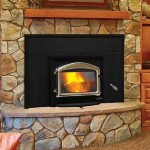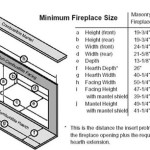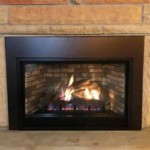```html
Modern Gas Fireplace Logs: An Overview
Modern gas fireplace logs offer a convenient and aesthetically pleasing alternative to traditional wood-burning fireplaces. They provide the ambiance of a real fire without the labor-intensive tasks of chopping wood, building a fire, and cleaning up ashes. These logs are designed to mimic the appearance of natural wood, often with remarkable realism, and are fueled by either natural gas or propane.
The appeal of gas fireplace logs stems from their ease of use and minimal maintenance. A simple switch or remote control ignites the flames, and the heat output can usually be adjusted to suit the user's comfort level. Unlike wood-burning fireplaces, gas logs eliminate the need for constant monitoring and fuel replenishment during operation.
Key Considerations When Choosing Gas Fireplace Logs
Selecting the right set of gas fireplace logs involves several important considerations. These factors influence the overall performance, appearance, and safety of the fireplace system. Understanding these aspects allows homeowners to make informed decisions that align with their needs and preferences.
Fuel Type: The first consideration is the fuel type – natural gas or propane. This choice depends on the existing gas line infrastructure in the home. Natural gas is generally more economical in areas where it is readily available. Propane, on the other hand, requires a separate tank and may be a better option for homes without access to a natural gas line. Converting between fuel types typically requires professional modifications to the gas valve and burner assembly.
Ventilation: Gas fireplace logs are classified as either vented or vent-free. Vented logs require a fully functioning chimney to exhaust combustion byproducts, such as carbon monoxide. Using vented logs in an unvented fireplace is extremely dangerous and can lead to carbon monoxide poisoning. Vent-free logs, also known as ventless logs, are designed to burn cleaner and do not require a chimney. However, they must be used in a well-ventilated room to prevent the buildup of carbon monoxide. Vent-free logs are equipped with oxygen depletion sensors (ODS) that automatically shut off the gas supply if the oxygen level in the room becomes too low.
Size and Style: The size of the fireplace firebox dictates the appropriate size of the gas log set. A log set that is too large may not burn properly and could damage the fireplace. The style of the logs is a matter of personal preference. Modern gas logs are available in a variety of wood species representations, including oak, birch, and pine. Some sets even include details like charred bark and split wood for a more realistic appearance. The arrangement of the logs also contributes to the overall ambiance of the fireplace.
Types of Gas Fireplace Logs: Vented vs. Vent-Free
The distinction between vented and vent-free gas fireplace logs is crucial for safe and efficient operation. Understanding the differences between these types is essential for selecting the appropriate logs for a given fireplace setup.
Vented Gas Logs: These logs are designed to be used in fireplaces with a fully functional chimney. The chimney serves to vent the combustion byproducts, including carbon monoxide, out of the home. Vented logs typically produce a more realistic flame appearance than vent-free logs because they burn with a larger, brighter flame. However, they also tend to be less energy-efficient, as a significant portion of the heat escapes through the chimney. Vented logs are primarily intended for aesthetic purposes rather than heating the room.
Vent-Free Gas Logs: These logs are designed to burn cleanly enough to be used without a chimney. They are equipped with an oxygen depletion sensor (ODS) that monitors the oxygen level in the room. If the oxygen level drops below a safe threshold, the ODS will automatically shut off the gas supply to prevent carbon monoxide poisoning. Vent-free logs are more energy-efficient than vented logs, as they radiate more heat into the room. However, they may produce a slightly bluer flame and a less realistic appearance compared to vented logs. Vent-free logs are suitable for heating smaller spaces, but proper ventilation is still essential to ensure safe operation.
Installation and Maintenance of Gas Fireplace Logs
Proper installation and regular maintenance are critical for ensuring the safe and efficient operation of gas fireplace logs. Following the manufacturer's instructions and performing routine checks can prevent potential hazards and prolong the lifespan of the log set.
Installation: Gas fireplace logs should be installed by a qualified professional who is experienced in working with gas appliances. The installation process involves connecting the gas supply line to the burner assembly, positioning the logs according to the manufacturer's instructions, and testing the system for leaks. Improper installation can lead to gas leaks, carbon monoxide poisoning, and other safety hazards. It's crucial to adhere to all local building codes and regulations during the installation process.
Maintenance: Regular maintenance is essential for keeping gas fireplace logs in good working order. This includes cleaning the burner assembly, inspecting the logs for damage, and checking the gas supply line for leaks. The burner assembly should be cleaned at least once a year to remove dust, debris, and soot that can accumulate and impede airflow. The logs should be inspected for cracks, chips, or other damage that could affect their appearance or performance. A simple soap and water solution is usually sufficient for cleaning the logs. The gas supply line should be checked for leaks using a soapy water solution. Any bubbles that form indicate a leak that needs to be repaired immediately by a qualified professional. It is also important to ensure the pilot light is clean and functioning correctly. Consult the manufacturer's instructions for specific maintenance recommendations.
Modern gas fireplace logs provide a convenient and attractive alternative to traditional wood-burning fireplaces. By understanding the key considerations, types, and maintenance requirements, homeowners can select and operate gas log sets safely and efficiently, enjoying the warmth and ambiance of a fire without the associated hassle.
```
The Ultimate Guide To Gas Logs Benefits Of This Hassle Free Fireplace Solution Outdoor Elegance Patio Design Center

Modern Gas Fireplace Logs Fire Glitter Fireballs And More

Napoleon Fiberglow 30 Gas With Burner Log Sets Gl30ne North Country Fire

Duluth Forge 28 In 55 000 Btu Direct Vented Natural Gas Fire Log Glass Burner Kit 210023 The Home Depot

Superior Complete 36 Giant Timbers Concrete Vent Free Gas Log Set With Mega Flame Burner Lmf36 Gt

Grand Canyon Gas Logs Bedrock Vented Contemporary Linear Drop In Bur Fireplaces Usa

Fireplace S Valor Gas Fireplaces

Empire Wildwood Outdoor Log Set York County Natural Gas Authority

Double Sided Gas Logs Vented And Ventless Sets

Warming Trend Update Gas Logs To Improve Performance And Appearance Walton
Related Posts








